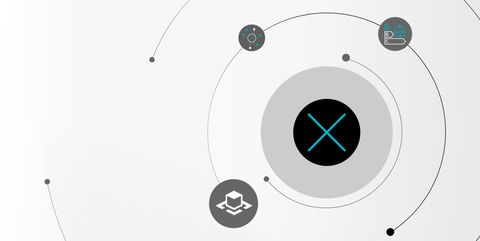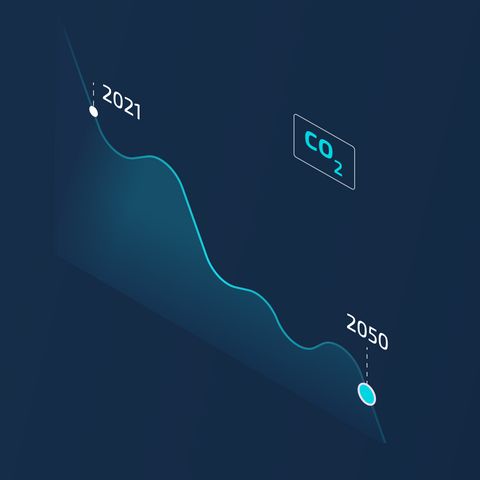
It is imperative that over the coming decades, the maritime industry will become more efficient and have a vastly lower carbon footprint. What is not fully appreciated at this moment, however, is the enormous potential to make leaps forward in efficiency gains today, with solutions that already exist.
This is true of almost any maritime operation, but particularly true of large offshore projects, such as wind farms, oil rigs, and so on, that have complex supply chains and multiple construction and supply vessels supporting their operation. While there is an enormous amount of data that could be leveraged for efficiency gains, normally it is impossible due to siloed equipment and a lack of visibility of data.
But new technologies such as APIs remove this barrier, providing tremendous potential for charterers and other maritime businesses to integrate best-in-breed solutions to make efficiency gains. Recently, we discussed how API technology is enabling new types of collaboration, and we are just scratching the surface of this potential. In this post, we will look at a specific example of the potential offered by two best-in-breed solutions, Streamba with its VOR solution, and Onboard with the Vessel API. The integration of these two solutions is already being leveraged by the oil and gas sector in the Southern North Sea, resulting in incremental efficiency gains, measurable outcomes, and performance being guided by data.
What is an API?
But first, a brief introduction to the enabling technology. APIs (Application Programming Interface) allow software to communicate and share data with other software. They provide a flexible integration layer where you can plug in and out data sources and share data in any format or with anyone you wish. Organizations are now leveraging APIs to collaborate by sharing their data and services, enabling partners to build powerful new business models and unlock vast amounts of value.
About the solutions
Streamba is a software company that specializes in scalable supply chain technologies. Its solution, VOR, enables planning, procurement, logistics, and commercial teams to deliver global operational discipline, reducing operational costs and emissions along the supply chain, from end to end. On the other hand, Onboard enables organizations to unlock operational efficiency gains on their vessels, by providing visibility into vessel data through the Onboard Vessel API and Onboard Apps.
Orchestrate multiples of efficiency gains with VOR and Onboard together
To get a sense of how powerful Onboard is as a standalone solution, Acta Marine was able to reduce its fuel consumption by 33% by using the Onboard Fuel Efficiency app.
Now let's consider the potential ways the combined data from your supply chain through VOR and vessel(s) through Onboard could multiply these gains.
Say you are an offshore wind farm or oil rig operator. In terms of your supply vessels, among the many things you can optimize are the number, capacity, size, and waiting times of vessels, the number of voyages your vessels go on, and so on. And in terms of your supply chain, there is a similar number of areas to optimize; planning and prioritizing cargo delivery, material movement, land transportation, distribution, cargo offloading, and many more.
For a long time, the problem was that data from both these areas were siloed. The operational impact of this disconnection was (and in most cases continues to be) increased cost, delay, and risk. When scaled across you global footprint, this lack of operational discipline prevents energy operators from unlocking insight that would deliver safer, more reliable, and more efficient operations through improved collaboration and decision making. Simple in theory, but difficult in practice.
But with the API-powered connection between VOR and Onboard, this barrier to combining data is removed. Suddenly, you can look at data from your vessel and supply chain, and make gains in an almost unlimited manner, a few of which are listed below:
-
Eliminate waiting time across the entire supply chain, from both cargo port delivery and voyages. If you run the figures on these optimizations, the potential becomes enormous; consider X number of vessels and delivery vehicles, staffed by Y people each, waiting for an average Z hours a week longer than needed, and multiplied over global operations, and the size of the potential gains become clear.
-
Reduce the number, capacity, or size of vessels and supply chain resources you need. For example, by optimizing the use of vessels for maximum utilization, you may realize you can achieve outcomes with a reduced number of vessels, or perhaps the same number of vessels, but downsize a couple to run more cost-effectively and with a lower carbon footprint.
-
Make optimal use of available vessels and delivery vehicles for urgent, high-speed deliveries. Resources in your supply chain can quickly be diverted from routine to time-sensitive deliveries if you have the data available to make fast decisions.
These are not hypothetical gains. They are achievable today with operational discipline. Cross-functional teams and frontline operational experts can unlock these gains when they are able to leverage data from across their vessels and supply chain and proactively collaborate.
And considering that organizations using just one of the solutions are seeing results such as a 33% reduction in vessel fuel consumption, the potential to save resources in your entire supply chain is enormous.
Start small, scale fast
Lower returns, climate-driven divestments, and margins being squeezed on core business units require supply chain managers to rapidly demonstrate transformation and value. And the traditional approach of bringing in experts to show PowerPoints of how to increase efficiency is no longer going to cut it. What got us here won't get us to where we need to be.
To unlock transformation, the supply chain must embrace learning incrementally and at speed. And the beauty of API-powered innovation means that you do not need to take massive risks or do big things to transform and innovate. By contrast, you can get started on a small project to prove ROI and scale easily from there. Your learning culture, through small, simple rapid, measurable steps - targeted towards measurable objectives such as reducing fuel consumption by X% - will move you forward.
To find out more about how the Streamba/Onboard collaboration could help your organization, get in touch.

